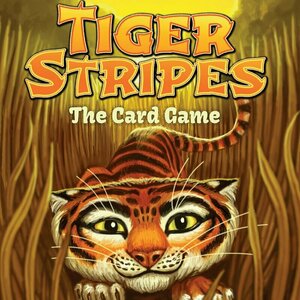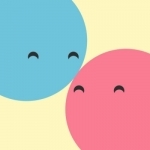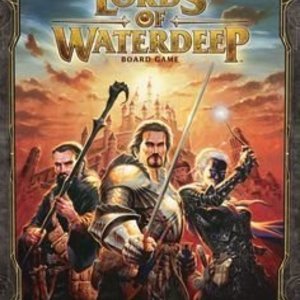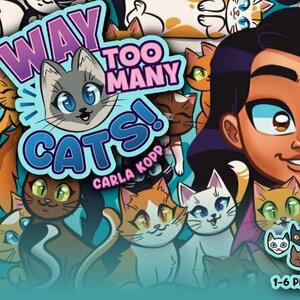Purple Phoenix Games (2266 KP) rated Tiger Stripes in Tabletop Games
Nov 25, 2021
Tiger Stripes is a set collection, hand management, drafting game for two to four players. In it, players are young tiger cubs just earning their stripes (a fact I did not know prior to playing: that tiger cubs aren’t born with stripes). Each cub will earn their stripes by drafting the best available cards and utilizing them to the fullest in order to collect sets of prey.
Oh fact check: tigers are born with stripes already, so this game is not based fully on facts.
DISCLAIMER: We were provided a copy of this game for the purposes of this review. This is a retail copy of the game (I think), so what you see in these photos is probably what would be received in your box. I do not intend to cover every single rule included in the rulebook, but will describe the overall game flow and major rule set so that our readers may get a sense of how the game plays. For more in depth rules, you may purchase a copy online or from your FLGS. -T
To setup, each player will choose their tiger avatar cards and also receive seven Stripe tokens. The card deck is shuffled, and each player is dealt two cards for the starting hand. The remainder of the deck is placed on the table as a draw deck, but five cards are dealt to the table as an offer row. The youngest player goes first, and the stripes are ready to be earned, like Boy Scout badges… but for ferocious tiger cubs.
Turns are taken in three steps. The player must make a choice of one action for the first step of their turn: Draw a card, Take a tiger card, or Capture Prey. A player may choose to blindly draw a card from the top of the deck and add it to their hand as their action. Alternately, the player may instead choose to take a tiger card from the offer row and add it to their hand. Both of these are self-explanatory.
The third action that can be taken is to Capture Prey. A tiger may capture prey from the offer row by discarding cards from their hand with matching symbols to their target cards they wish to capture. Each card in Tiger Stripes has one or more symbols printed in the upper left hand corner. By discarding cards from hand to the discard pile, a player may use all the symbols provided by these cards to match with cards’ symbols from the offer row. For example, a player may discard two tiger cards and a snake card, noting the symbols now provided. By using the purchasing power of these symbols, the player may then draft cards from the offer row by paying their cost in symbols. It is entirely possible for a player to be able to draft cards from hand in order to purchase all available cards in the offer row to be added to their hand. An explanation of the significance of this is coming.
The second step of a turn is mandatory only if the prerequisites are met: every set of three like cards in hand are discarded in return for Stripe Tokens. So, for every set of three matching monkey, snake, deer, and boar, the player will receive one, two, three, or four Stripe Tokens to be added to their avatar card, respectively, with any tiger cards discarded to be treated as wild cards to complete a set. Therefore, a player may wish to purchase all cards from the offer row in an attempt to score multiple sets during this second step to earn as many stripes as possible.
Finally, the third step of the turn is to Replenish the Jungle (the offer row). For any cards drafted in the turn, the player will replace with cards from the draw deck to setup the next player’s turn.
Play continues in this fashion of grabbing cards, discarding cards, and scoring sets for stripes until one player has earned their seventh stripe and won the game!
Components. This game is a deck of cards and a bunch of Stripe Tokens. The cards are all nice quality, with linen finish, but are a bit on the thinner side as far as flimsiness is concerned. I think if players are all somewhat careful this will not pose problems. If so, consider sleeving your copy. The Stripe Tokens are oblong octagons with stripey art. Speaking of the art, throughout the game the art is very cute and cuddly… except for the boar. He is crotchety. I do enjoy finding the stalking tiger somewhat hidden on each card’s art. A great nod to the noble tiger’s hunting ability.
Now, as I was typing the rules breakdown I felt like I was typing quite a lot for as light as the game actually is. In fact, though it says on the box that it is intended for ages 7+ I just couldn’t leave out my little 5-year-old gamer son. He grasped the rules really well, and though he hasn’t developed the best strategy-focused brain skills yet, he is still able to play and enjoy Tiger Stripes. In actuality, he and I had a blast playing through this several times. Yes, it is a resource optimization card drafting game, but to him, it was more like procuring a veritable zoo of cute animals that then offered his tiger the stripes needed to win. And win he did. Several times. This certainly isn’t a game of high strategy and multiple-minute turns, but rather a quick and easy card game with a great little theme.
Is the designer, Isabel duBarry, a relative of the great Philip duBarry? Perhaps. And that is a great thing, because one of our favorite games across the board is Revolution! Perchance game design just runs in the family. I am not sure, so maybe someone can chime in on this here.
When my son adds a game to his rotation, that is a sign of a great little game for us. He has added Tiger Stripes to this rotation and we will be playing the mess out of it here over the next several weeks/months. While this is by no means a gamer’s game, it is absolutely perfect for a game day with kids. My child loves it, and I quite enjoy playing as a tiny tiger out on the prowl for their stripes. If you have littles at home, parents who haven’t quite converted fully into game partners, or newbies you are inviting into the hobby, Tiger Stripes is a good little game to get the party started. It’s quick, easy, features great art and theme, and introduces simple mechanics to hook people on gaming. Go grab a copy and just keep it in your back pocket for those times you need something like this for that one special group in front of you.
Peter Shephard (2822 KP) rated Lords of Waterdeep in Tabletop Games
Jul 12, 2019
For people with knowledge of Dungeons and Dragons, being able to play as one of the hidden Lords of Waterdeep feels very special; for those who know the Forgotten Realms well, it adds an extra level of depth (outside of the books and pages) to the City, and gives some inspiration for the sort of tasks the Lords may ask players.
The game itself is a worker placement, resource/recruit gathering, with a strong player vs Player element.
The core game is absolutely playable multiple times, and the add on (probably reviewed separately!) adds new rules and characters, but crucially is not an absolute must to get the full experience.
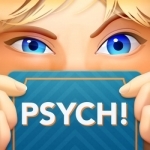
Psych! Outwit Your Friends
Games and Entertainment
App
From the creators of "Heads Up!” comes “PSYCH!” – an exciting new party game to play with...
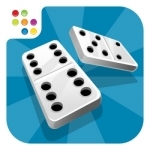
Dominoes by Playspace
Games and Entertainment
App
Dominoes Playspace is an online multiplayer game where you can chat with your friends while you...

HPlayer Plus
Entertainment
App
Downloads and watches videos from your Dropbox, Google Drive, iCloud, OneDrive, Box, pCloud etc on...
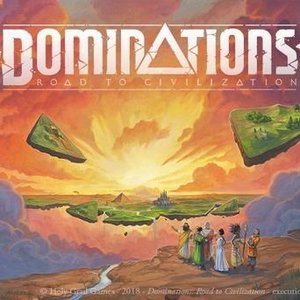
Dominations: Road to Civilization
Tabletop Game
Dominations: Road to Civilization is a 2 – 4 player game by Olivier Melison and Eric Dubus. In...
BoardGames DominoGames CivGames Kickstartergames 2018Games

FAR: Lone Sails
Video Game Watch
In FAR, the player controls the driver of a large vehicle and explores a massive dried ocean bed in...
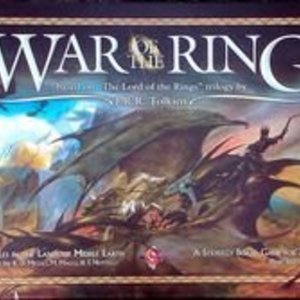
War of the Ring (First Edition)
Tabletop Game
War of the Ring is an area control strategy war game based on the events of Lord of the Rings. The...
Purple Phoenix Games (2266 KP) rated Way Too Many Cats! in Tabletop Games
Jan 24, 2022
Way Too Many Cats is a cat and kitten drafting and spatial puzzle game for one to six players. In it, players work at feline adoption centers with the goal of having all stock adopted. To do this, players will be placing specific cats adjacent to other favorable cats for points, giving kittens a habitat of their own, and even supplying the cats with toys. The player who completes these tasks most effectively by the end of the game will score the most points and win!
DISCLAIMER: We were provided a prototype copy of this game for the purposes of this review. These are preview copy components, and I do not know for sure if the final components will be any different from these shown. Also, it is not my intention to detail every rule in the game, as there are just too many. You are invited to download the rulebook, back the game through the Kickstarter campaign, or through any retailers stocking it after fulfillment. -T
To setup, each player receives an adoption center board, starter cat tile, and a reference card. The kitten and toy tokens are placed into the provided bag to be shuffled and drawn later. The stack of adoptable cats is shuffled, and four drawn and revealed to create Cat Alley (from which players will be drafting). Nearby, three stacks of kitten/toy tokens are made with one stack containing one token, the next stack containing two, and the final stack containing three tokens. The starting player marker is given to the player who most recently pet a cat (aka probably attacked by a cat) and the game may begin!
A game of Way Too Many Cats lasts many rounds, and ends once all players have had the same amount of turns and one player having completely filled their adoption center. On a turn, the active player will take one mandatory action, and then will choose to take another two actions. The mandatory action that all players take each turn is to Choose a Token Set and Cat Card(s) and Place Them. A bit wordy, but this is a prototype, so I will let it slide. In any case, the player will choose to (1) take the smallest group of tokens and two Cat tiles of their choice, (2) take the mid-sized group of tokens and one Cat tile of their choice, or (3) take the largest group of tokens and the right-most Cat tile from Cat Alley (the offer row). Once the choice has been made and all components taken, the player then refreshes Cat Alley by sliding all tiles to the right and refilling to four tiles. Also, the player pulls three tokens from the bag and adds one to each group of tokens on the table. Note, as the player has just chosen a group of tokens, one of the groups will be empty until they place a token there – thus creating the smallest group and embiggening (I’m on a Marvel kick right now) the other two groups.
As an optional second action, the player may choose to give any cat in their adoption center a toy from their personal supply. Cat tiles show icons for toys that the cat will appreciate, though not every cat is into toys. Note, the toy tokens may be given to the cats on any turn, and even at the end of the game just before scoring.
Finally, at the end of the turn, the player may Create a Kitten Habitat by discarding three toy tokens to the bag. The player then designates a space on their adoption center to be the kitty haven and it can house any number of kittens.
Once a player fills their last adoption center slot, the end game is triggered. Players will finish out the round so that all have an equal amount of turns. Then, points are tallied and scored following an involved scoring process. Points in this game are scored in numerous ways. Firstly, the starter cats are scored, and then each type of cat is scored. For example, the paw icon on cat tiles earn 1 VP for each adjacent cat of a different color. Each ball of yarn icon on cat tiles scores 2 VP. The goldfish cracker icon scores 2 VP for each adjacent cat or kitten sporting a ball of yarn icon. Finally, the feather icon scores 3/7/12/18 VP for each group of adjacent feather cats of train size 2/3/4/5 cats. So placement is very important in this game. Not enough scoring?
Players will score more points for kittens and for specific icons on cat tiles. 15 VP is awarded to a player who holds a complete set of the seven different types of kitten tokens, while another 8 VP is earned for holding a set of four matching kitten types. The player receives a -2VP penalty for each kitten token not associated with either type of set nor in a habitat on the board. Additionally, for each cat tile on the board, special scoring will be earned for supplying the tile with the requested toy, or placing it in the preferred space in the center, or even for other adjacency considerations.
Players will be scoring hundreds of points, and hopefully having their felines adopted by unsuspecting travelers and goo-goo eyed children. The player with the most VP at the end of the game is the winner!
Components. Again, this is a prototype copy of the game, so I know that these are not final components at all. Having had many opportunities to preview for Weird Giraffe Games now, I am confident that the final game will be sparkling with upgrades and cool features. To reiterate, my interest in the theme is on the lower side, as I am not a cat person, but I can definitely understand the theme and it works well with this type of game. I guarantee that you will be able to spot Way Too Many Cats in stores right away because that box art is super colorful and busy. I do enjoy the cartoony art style, and it fits the theme really well. The final version of the game will undoubtedly affect this paragraph in the future, but for now this is well on the way to being a very solid title with regards to components, artwork, and theme.
But do I like it? Surprisingly, yes I do. Quite a bit. Theme goes a really long way with me, but I have been known to enjoy other games with themes that don’t necessarily resonate with me, so perhaps “surprising” isn’t the best term here. I really enjoy the spatial puzzle aspect of the game. I highlighted puzzle because that’s exactly what is going on here. When I am playing, I have to debate whether to take all those kitten tokens to complete my sets and be stuck with the right-most card, or perhaps taking the smallest group is more beneficial so that I can draft the two best cards for what I am building on my board. Is it really worth it to me to grab Taco just because I am starting to realize I have a food themed cat dispensary? Why does this cat need a scratching post token when it’s clearly been de-clawed?? These are serious questions, folks!
I kid, but only because this is a very light game, and one that I think works well in many situations. Have newer to intermediate level players coming over tonight? Grab Way Too Many Cats! Having an animal-themed game night? Pull this one out! Sticking with a mechanic-specific lineup? You got it. Now, I haven’t seen the Kickstarter page yet, nor have I asked Carla (the designer) what the plans are for it, but I know this one is close to many peoples’ hearts, so I imagine it will get all the love that’s possible in making this a wonder in a box. The mechanics are there. The theme is… great for some. Way Too Many Cats is a thinker in a catsuit disguise, but it is not too heavy to turn off casual or intermediate gamers. I can certainly add my stamp of approval and recommend checking out Way Too Many Cats. Look for it to hit Kickstarter in February and click here to be notified on launch. You will probably want to get in on this project early if any of this sounds appealing to you.
PS – How many catfolk did I offend in this preview? How many aquarists have I now befriended? What up, my peeps!
